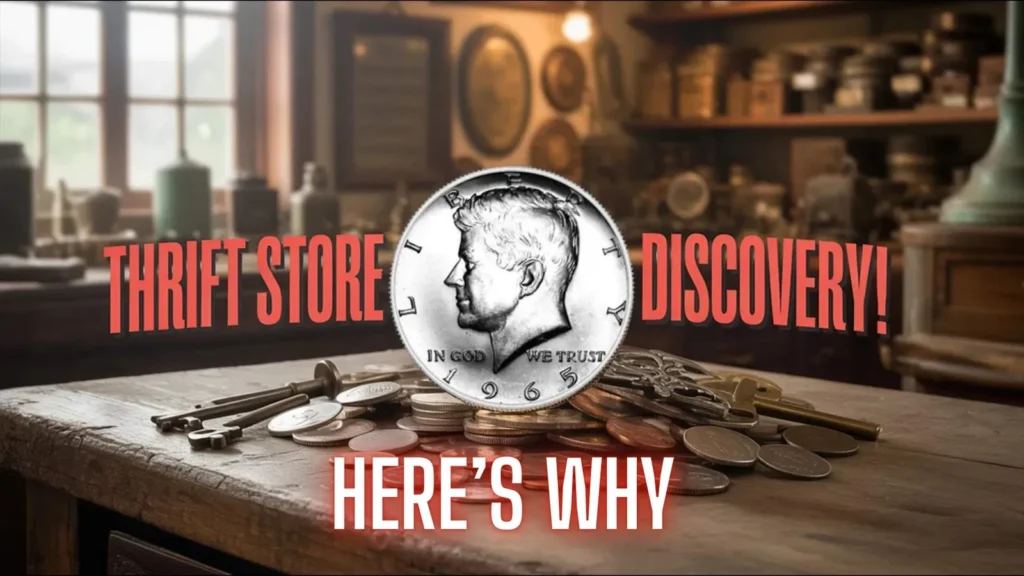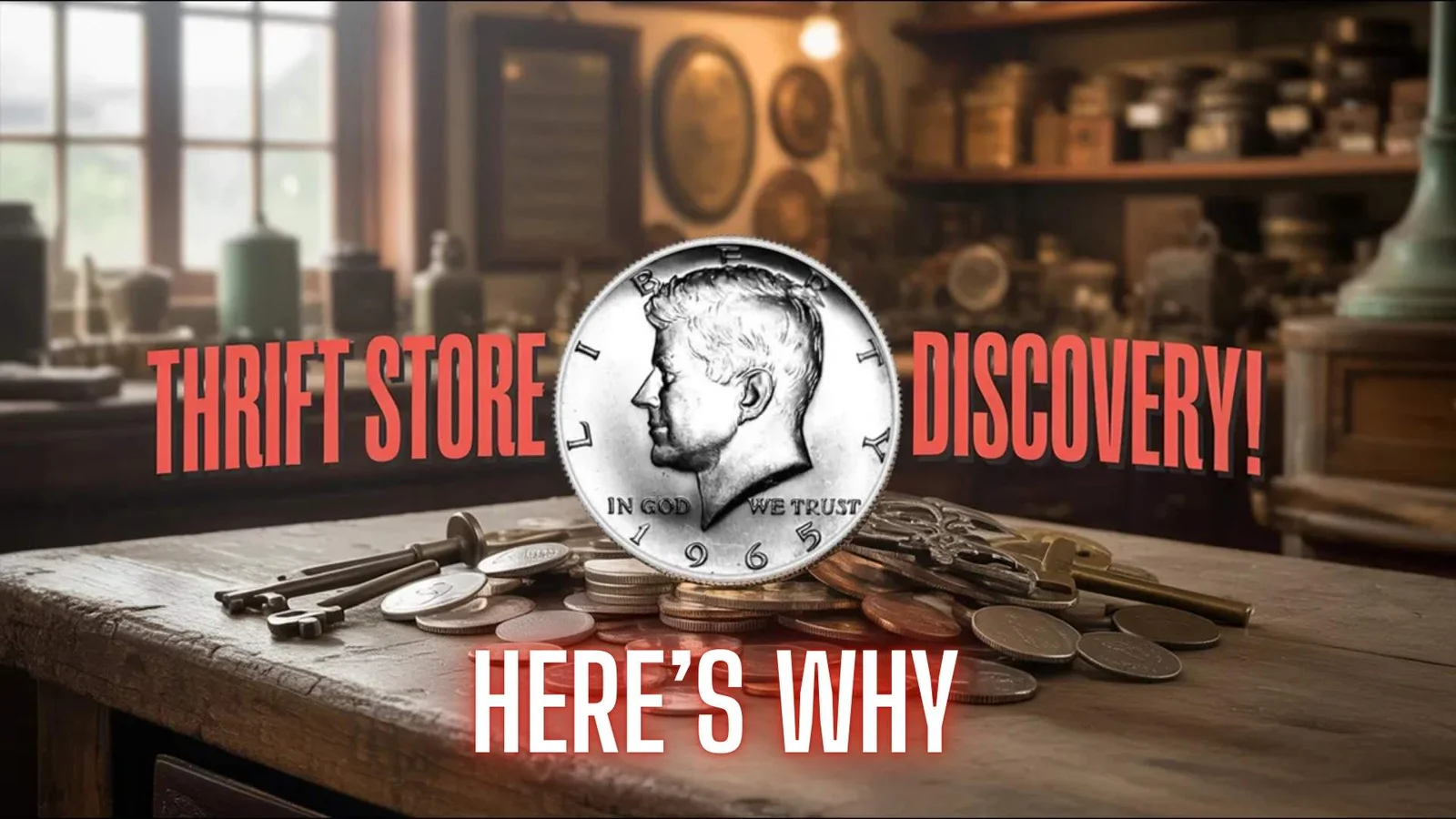Thrift stores are treasure troves for bargain hunters, but one lucky shopper’s find in a dusty coin jar has gone viral: a rare Kennedy Half Dollar potentially worth hundreds to thousands of dollars. This everyday discovery underscores how history and minting quirks can turn pocket change into collector gold. From its poignant origins to spotting winners, here’s the scoop on why this coin is captivating enthusiasts and how you can join the hunt.
The Viral Thrift Store Discovery
Amid a jumble of mixed coins at a local thrift store, a shopper spotted a shiny Kennedy Half Dollar in a forgotten jar. What seemed like a standard 50-cent piece turned heads after online sleuthing revealed its rarity—possibly a silver variant or error coin. Shared on social media, the story exploded, drawing coin experts who pegged its value at $500–$3,000 based on condition and type. Finds like this pop up in thrift shops, estate sales, and garage sales, reminding us that overlooked jars could hold hidden value. The shopper’s quick ID and grading turned a $1 donation into a windfall, proving vigilance pays off.

History of the Kennedy Half Dollar
Minted starting in 1964, the Kennedy Half Dollar was a swift tribute to President John F. Kennedy, assassinated in November 1963. Released by March 1964, it featured JFK’s profile on the obverse (designed by Gilroy Roberts) and a modified presidential seal on the reverse (Frank Gasparro). Early issues were 90% silver to honor tradition, but public hoarding led to over 273 million 1964 coins vanishing from circulation. From 1965–1970, silver dropped to 40% amid shortages; clad copper-nickel took over in 1971. Production tweaks, like the rare “Accented Hair” proofs in 1964, added collector appeal. Today, it’s a symbol of Camelot-era nostalgia, with billions minted but rarities scarce.
Why Some Kennedy Half Dollars Are Worth a Fortune
Value hinges on silver content, mint errors, low mintages, and pristine condition (graded MS65+ by PCGS or NGC). Silver melts alone boost commons, while errors like doubled dies or missing marks skyrocket prices. Here’s a value guide for standout variants:
| Variant/Type | Key Features | Value Range (USD) |
|---|---|---|
| 1964 (90% Silver) | Initial silver strike; high mintage but hoarded | $10–$500+ |
| 1964 Accented Hair Proof | Bold hair lines on JFK; limited proofs | $200–$3,000+ |
| 1965–1970 (40% Silver) | Transitional silver-clad | $5–$200 |
| 1970-D | Low mintage for sets; Denver mark | $50–$1,000+ |
| 1971–1977 No Mint Mark Proofs | Errors missing Philadelphia mark | $100–$1,500 |
| 1998-S Matte Finish | Special collector issue; silver or clad | $500–$2,000 |
High-grade examples or errors (e.g., off-center strikes) can double these figures.
How to Identify a Valuable Kennedy Half Dollar
Spotting a gem is straightforward with these checks:
- Date Focus: Prioritize 1964–1970 for silver; 1970-D for scarcity.
- Mint Mark Hunt: Below the date—”D” (Denver), “S” (San Francisco), or none (Philadelphia). Missing marks signal errors.
- Composition Test: Silver coins are heavier (11.5g vs. 11.34g clad); non-magnetic and edge shows silver stripe.
- Error Scan: Look for doubled dies (blurry text), accented hair details, or off-center designs with a magnifier.
- Condition Check: Shiny, unworn surfaces? No scratches or haze—proofs have mirror fields.
If it passes, consult a dealer for authentication.
Tips for Collectors and Hunters
- Gear Up: Carry a pocket magnifier and digital scale for on-the-spot checks.
- Source Smart: Thrift stores, bank rolls ($10 for $500 face value), or estate auctions are prime spots.
- Preserve Properly: Use soft holders; never clean—removal of toning can slash value by 90%.
- Grade for Gains: PCGS or NGC certification ($20–$50) verifies and boosts resale.
- Guide Yourself: Snag a “Red Book” for $15 to master dates and errors.
Even commons appreciate over time—hold silver ones for melt value alone.
FAQs on Kennedy Half Dollars
- Are they still in circulation? Rarely—most silver ones were hoarded, but clad versions occasionally surface.
- What’s the most valuable? The 1964 Accented Hair proof and 1970-D top the list for rarity and demand.
- Should I keep every one I find? Yes—silver melts and potential errors make them worth stashing; even clad ones gain collector interest.
- Fakes to watch? Common for silver errors—always weigh and grade to confirm.
- Auction tips? Heritage or eBay for sales; certified coins fetch 2–3x more.
This thrift store tale isn’t isolated—it’s inspiration to scan your stash. That coin jar gathering dust? It might echo the viral find. Grab your tools, hit the stores, and uncover your Kennedy keepsake. For more coin chronicles, visit PCGS.com or NGCcoin.com. Happy hunting!
